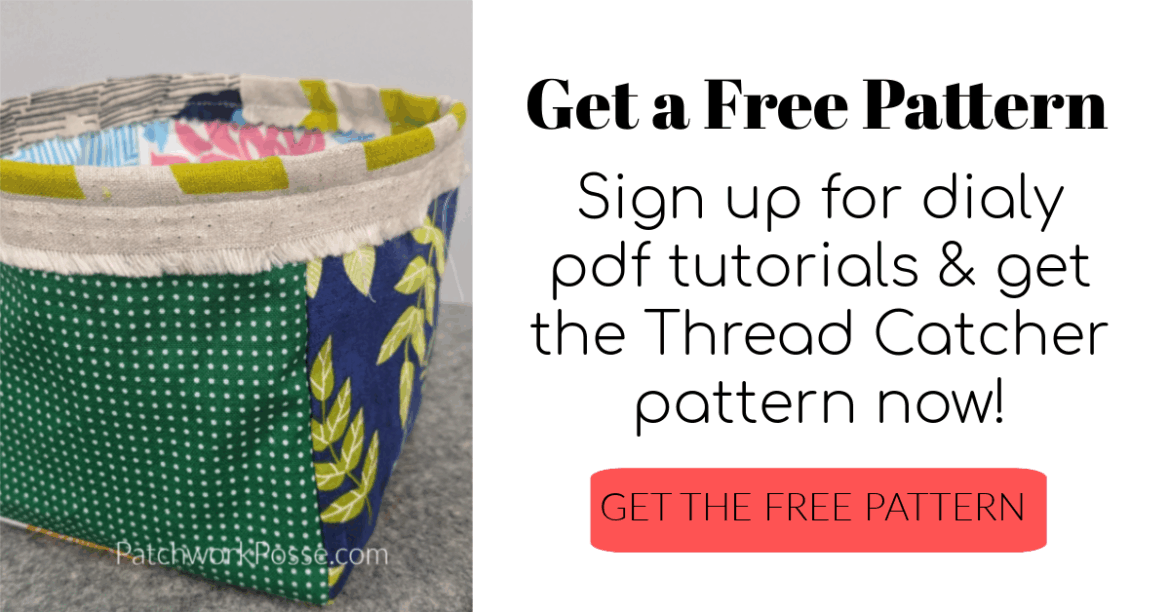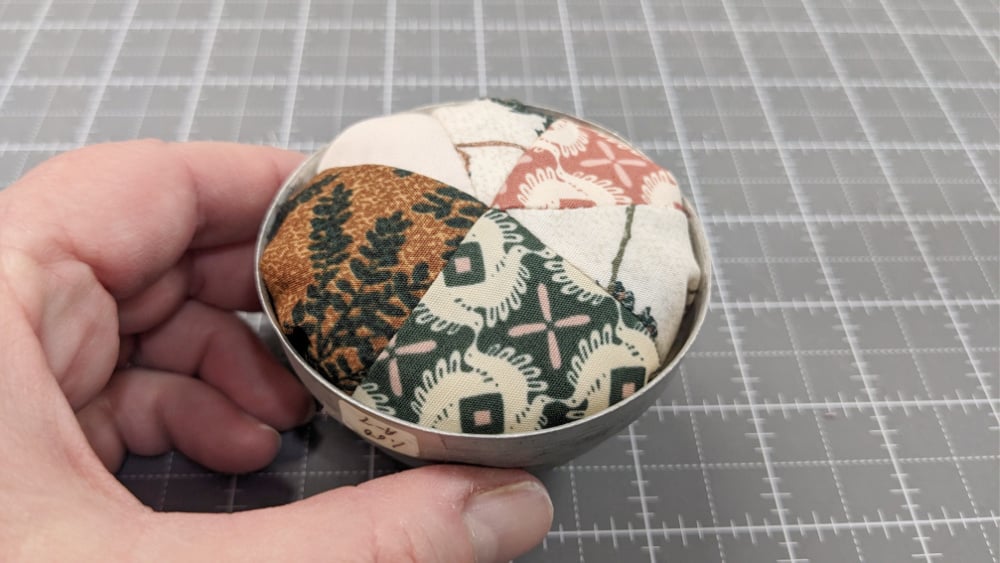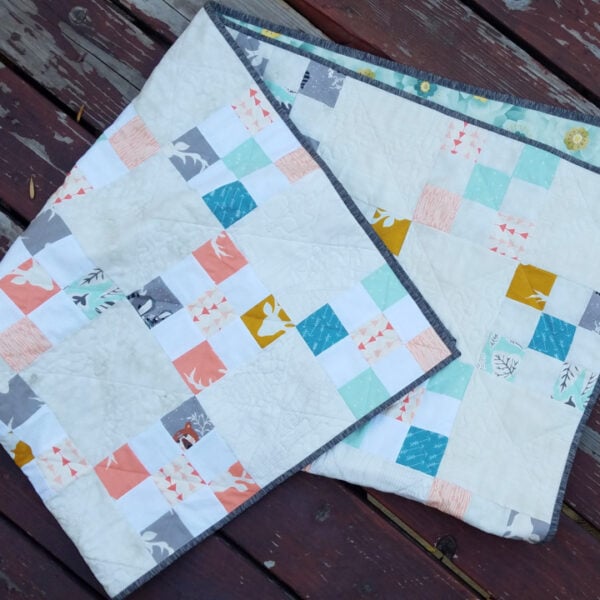
Selvages are the tightly woven edges of fabric that prevent it from unraveling, and they’ve become a popular material among quilters for their unique look and durability. Quilters love using selvages to add a creative, scrappy touch to their projects, ranging from quilts and bags to home décor and clothing.
Not only do selvage projects offer endless design possibilities, but they also promote eco-friendly crafting by repurposing fabric scraps that might otherwise go to waste.

What is the selvage definition?
A selvage is the side of fabric where the finished edge stops the edges from fraying. The warp threads run parallel down the length of the fabric and the selvage is created when the weft threads are folded back on themselves at the end of each row as the fabric is woven. In recent years the selvage has become a beautiful part of the fabric design, and as makers, we tend to love to use every single part of the fabric we all enjoy buying and using so much!

Why it’s not a great idea to use it?
- On one edge of the fabric selvedges are usually white and don’t contain the fabric’s color or design so are of no use alongside the main print
- Selvedges are often thicker and heavier than the main fabric; this can sometimes make them difficult to sew through; and
- Even if hidden within a hem or seam, selvedges don’t always behave the same as the rest of the fabric during washing, they may shrink less and can cause warping.
I also have found they don’t have any give. So for piecing they can become a real problem. And the pin holes. Yes, those are pin holes. If you aren’t careful when piecing those holes and the white edging can sneak into a quilt block or border. Not the best.
How do you cut your selvage?
- Typically they are cut BEFORE you start cutting into your fabric. I admit that sometimes I do not do this, but if I remember this is how it’s cut.
- 1 1/4″ from the edge. It’s a tiny bit much, however it allows you to get enough of the fabric that you can either 1- use it in a project or 2- remember the fabric!
Either reason, this cut will give you all the info you need and enough for a fun project or two.

How do you store your selvage?
I’m not one who has been collecting selvages since the beginning of my quilting career. I have a small collection and admit that I have given them away to friends as well. This collection though doesn’t go into the regular scrap pile. It’s on it’s own and in it’s own special place.
To keep things a little organized though I do stick them all into a clear bag with a zipper closure. This helps me -see them and -the zipper helps keep them contained.
They are long strips like snakes and will sometimes sneak out on their own.

How do you read the selvage?
Funny thing about the selvage fabric is that it holds a lot of information!

It will tell you who the manufacturer is— the name of the fabric line, the designer and possibly the contact or url for more info

Some of them venture to tell you about the licensing rules, content of the fabric, year produced,
What are the color dots about?
These can become your best friend. They don’t look like much, but they can become the key to your quilt fabric matching up and coordinating with each other. The dots or flower or whatever shape they come in allow you to get a look at the fabric that is used to print that piece of fabric. You can match up to it and find coordinators. They take the guess work out of matching fabric.

What projects can you make with your selvage fabric?
In the IAQ quilt group- we have a couple of projects to help figure that one out. There are quite a few options though if you think outside of the box.
The projects can be simple and the selvage is used in fun spots or surprises. The whole project doesn’t need to be all selvage!
We are using the selvage in the leaf of the bag– the happy hen is sporting them on her sides so you can clip right on them, and the spool mug rug features them as the thread.



–> you can login here if you are a member and are looking for the patterns.
How do you sew with this technique?
When you look at those long snake like strips – I know what you are thinking….really? those? yes.
The easy option really is to string quilt or string piece them. This is where you use a foundation piece of fabric and sew the selvage strips directly on top of it.
You can if you’d like sew and flip….or you can layer them and then sew- giving you more space of the fabric strip to show off.
*remember- that the edge is raw BUT it won’t ravel! So this layer and sew works really well and gives you more fabric to play with in a way.

You can also check out how to sew them on the batting and backing for Quilt as you go!
You’ll be finished with the back at the same time as the front!


FAQ’S
What’s the best way to work with selvages?
Trim your selvages evenly and sort them by color or pattern to make sewing easier and more organized.
How should I wash and care for selvage projects?
Machine wash your selvage projects on a gentle cycle with cold water to prevent shrinking or fraying. Air dry or tumble dry on low to maintain the fabric’s integrity.
What if my selvages shrink or the colors bleed?
Pre-wash your selvages before sewing to minimize shrinking and reduce the risk of color bleeding. Use color catchers during the first few washes to prevent any dye transfer.
Additional Content
Binding a Quilt With Selvage in the Binding Strip
Do you have any hints or tips when using selvage pieces?

Becky Jorgensen is the creative quilter behind Patchwork Posse, the Patchwork Planner and her online quilt group Patchworkers Plus. You can find her patterns in books, magazines, and her quilt membership. Gather your quilting supplies, organize your sewing space, explore the process of disappearing quilt blocks, or finish a free quilt pattern. I'll help you use what you have, finish what you start and make your quilting journey fun!
Follow me here: Facebook, Pinterest, YouTube







Make zippy bags with selvage strips sewn together onto backing. With or without batting .